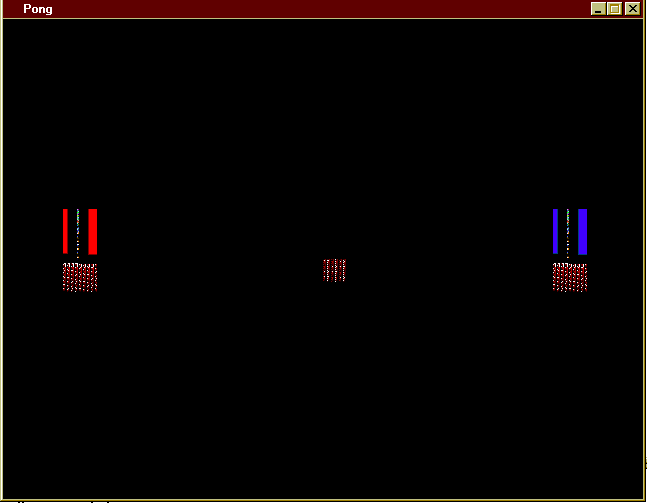I don't understand why my bitmaps aren't loading properly. I just want to make a simple Pong game, but the bitmaps are all screwed up. Here's an image displaying the problem:

And here's Bitmap.cpp:
#include "Bitmap.h"
Bitmap::Bitmap()
: m_hBitmap(NULL), m_iWidth(0), m_iHeight(0)
{
}
// Create a bitmap from a file
Bitmap::Bitmap(HDC hDC, LPTSTR szFileName)
: m_hBitmap(NULL), m_iWidth(0), m_iHeight(0)
{
Create(hDC, szFileName);
}
// Create a bitmap from a resource
Bitmap::Bitmap(HDC hDC, UINT uiResID, HINSTANCE hInstance)
: m_hBitmap(NULL), m_iWidth(0), m_iHeight(0)
{
Create(hDC, uiResID, hInstance);
}
// Create a blank bitmap from scratch
Bitmap::Bitmap(HDC hDC, int iWidth, int iHeight, COLORREF crColor)
: m_hBitmap(NULL), m_iWidth(0), m_iHeight(0)
{
Create(hDC, iWidth, iHeight, crColor);
}
Bitmap::~Bitmap()
{
Free();
}
//-----------------------------------------------------------------
// Bitmap Helper Methods
//-----------------------------------------------------------------
void Bitmap::Free()
{
// Delete the bitmap graphics object
if (m_hBitmap != NULL)
{
DeleteObject(m_hBitmap);
m_hBitmap = NULL;
}
}
//-----------------------------------------------------------------
// Bitmap General Methods
//-----------------------------------------------------------------
BOOL Bitmap::Create(HDC hDC, LPTSTR szFileName)
{
// Free any previous bitmap info
Free();
// Open the bitmap file
HANDLE hFile = CreateFile(szFileName, GENERIC_READ, FILE_SHARE_READ, NULL,
OPEN_EXISTING, FILE_ATTRIBUTE_NORMAL, NULL);
if (hFile == INVALID_HANDLE_VALUE)
return FALSE;
// Read the bitmap file header
BITMAPFILEHEADER bmfHeader;
DWORD dwBytesRead;
BOOL bOK = ReadFile(hFile, &bmfHeader, sizeof(BITMAPFILEHEADER),
&dwBytesRead, NULL);
if ((!bOK) || (dwBytesRead != sizeof(BITMAPFILEHEADER)) ||
(bmfHeader.bfType != 0x4D42))
{
CloseHandle(hFile);
return FALSE;
}
BITMAPINFO* pBitmapInfo = (BITMAPINFO*)(new BITMAPINFO_256);
if (pBitmapInfo != NULL)
{
// Read the bitmap info header
bOK = ReadFile(hFile, pBitmapInfo, sizeof(BITMAPINFOHEADER),
&dwBytesRead, NULL);
if ((!bOK) || (dwBytesRead != sizeof(BITMAPINFOHEADER)))
{
CloseHandle(hFile);
Free();
return FALSE;
}
// Store the width and height of the bitmap
m_iWidth = (int)pBitmapInfo->bmiHeader.biWidth;
m_iHeight = (int)pBitmapInfo->bmiHeader.biHeight;
// Skip (forward or backward) to the color info, if necessary
if (pBitmapInfo->bmiHeader.biSize != sizeof(BITMAPINFOHEADER))
SetFilePointer(hFile, pBitmapInfo->bmiHeader.biSize - sizeof
(BITMAPINFOHEADER), NULL, FILE_CURRENT);
// Read the color info
bOK = ReadFile(hFile, pBitmapInfo->bmiColors,
pBitmapInfo->bmiHeader.biClrUsed * sizeof(RGBQUAD), &dwBytesRead,
NULL);
// Get a handle to the bitmap and copy the image bits
PBYTE pBitmapBits;
m_hBitmap = CreateDIBSection(hDC, pBitmapInfo, DIB_RGB_COLORS,
(PVOID*)&pBitmapBits, NULL, 0);
if ((m_hBitmap != NULL) && (pBitmapBits != NULL))
{
SetFilePointer(hFile, bmfHeader.bfOffBits, NULL, FILE_BEGIN);
bOK = ReadFile(hFile, pBitmapBits, pBitmapInfo->bmiHeader.biSizeImage,
&dwBytesRead, NULL);
if (bOK)
return TRUE;
}
}
// Something went wrong, so cleanup everything
Free();
return FALSE;
}
BOOL Bitmap::Create(HDC hDC, UINT uiResID, HINSTANCE hInstance)
{
// Free any previous DIB info
Free();
// Find the bitmap resource
HRSRC hResInfo = FindResource(hInstance, MAKEINTRESOURCE(uiResID), RT_BITMAP);
if (hResInfo == NULL)
return FALSE;
// Load the bitmap resource
HGLOBAL hMemBitmap = LoadResource(hInstance, hResInfo);
if (hMemBitmap == NULL)
return FALSE;
// Lock the resource and access the entire bitmap image
PBYTE pBitmapImage = (BYTE*)LockResource(hMemBitmap);
if (pBitmapImage == NULL)
{
FreeResource(hMemBitmap);
return FALSE;
}
// Store the width and height of the bitmap
BITMAPINFO* pBitmapInfo = (BITMAPINFO*)pBitmapImage;
m_iWidth = (int)pBitmapInfo->bmiHeader.biWidth;
m_iHeight = (int)pBitmapInfo->bmiHeader.biHeight;
// Get a handle to the bitmap and copy the image bits
PBYTE pBitmapBits;
m_hBitmap = CreateDIBSection(hDC, pBitmapInfo, DIB_RGB_COLORS,
(PVOID*)&pBitmapBits, NULL, 0);
if ((m_hBitmap != NULL) && (pBitmapBits != NULL))
{
const PBYTE pTempBits = pBitmapImage + pBitmapInfo->bmiHeader.biSize +
pBitmapInfo->bmiHeader.biClrUsed * sizeof(RGBQUAD);
CopyMemory(pBitmapBits, pTempBits, pBitmapInfo->bmiHeader.biSizeImage);
// Unlock and free the bitmap graphics object
UnlockResource(hMemBitmap);
FreeResource(hMemBitmap);
return TRUE;
}
// Something went wrong, so cleanup everything
UnlockResource(hMemBitmap);
FreeResource(hMemBitmap);
Free();
return FALSE;
}
BOOL Bitmap::Create(HDC hDC, int iWidth, int iHeight, COLORREF crColor)
{
// Create a blank bitmap
m_hBitmap = CreateCompatibleBitmap(hDC, iWidth, iHeight);
if (m_hBitmap == NULL)
return FALSE;
// Set the width and height
m_iWidth = iWidth;
m_iHeight = iHeight;
// Create a memory device context to draw on the bitmap
HDC hMemDC = CreateCompatibleDC(hDC);
// Create a solid brush to fill the bitmap
HBRUSH hBrush = CreateSolidBrush(crColor);
// Select the bitmap into the device context
HBITMAP hOldBitmap = (HBITMAP)SelectObject(hMemDC, m_hBitmap);
// Fill the bitmap with a solid color
RECT rcBitmap = { 0, 0, m_iWidth, m_iHeight };
FillRect(hMemDC, &rcBitmap, hBrush);
// Cleanup
SelectObject(hMemDC, hOldBitmap);
DeleteDC(hMemDC);
DeleteObject(hBrush);
return TRUE;
}
void Bitmap::Draw(HDC hDC, int x, int y, BOOL bTrans, COLORREF crTransColor)
{
DrawPart(hDC, x, y, 0, 0, GetWidth(), GetHeight(), bTrans, crTransColor);
}
void Bitmap::DrawPart(HDC hDC, int x, int y, int xPart, int yPart,
int wPart, int hPart, BOOL bTrans, COLORREF crTransColor)
{
if (m_hBitmap != NULL)
{
// Create a memory device context for the bitmap
HDC hMemDC = CreateCompatibleDC(hDC);
// Select the bitmap into the device context
HBITMAP hOldBitmap = (HBITMAP)SelectObject(hMemDC, m_hBitmap);
// Draw the bitmap to the destination device context
if (bTrans)
TransparentBlt(hDC, x, y, wPart, hPart, hMemDC, xPart, yPart,
wPart, hPart, crTransColor);
else
BitBlt(hDC, x, y, wPart, hPart, hMemDC, xPart, yPart, SRCCOPY);
// Restore and delete the memory device context
SelectObject(hMemDC, hOldBitmap);
DeleteDC(hMemDC);
}
}
The thing in the middle is supposed to be the ball, and the other two things are supposed to be the paddles. I have no idea why the images are being displayed like that. Help!
[edited by - King9999 on January 23, 2004 8:58:20 PM]
[edited by - King9999 on January 23, 2004 9:00:09 PM]
[edited by - King9999 on January 23, 2004 9:02:36 PM]
 And here's Bitmap.cpp:
And here's Bitmap.cpp:


